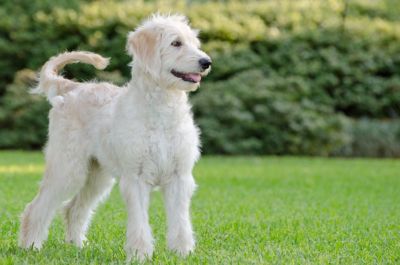 Goldendoodles are one of the original designer dogs. Bred in 1969, they were created when the poodle breed was crossed with the golden retriever breed to provide guide dogs for visually impaired people with allergies. If bred correctly, these dogs have hair instead of fur and don’t shed, which minimizes their risk to allergy sufferers. They’re also usually loyal and adorable companions with easygoing personalities and a high tolerance for children.
Goldendoodles are one of the original designer dogs. Bred in 1969, they were created when the poodle breed was crossed with the golden retriever breed to provide guide dogs for visually impaired people with allergies. If bred correctly, these dogs have hair instead of fur and don’t shed, which minimizes their risk to allergy sufferers. They’re also usually loyal and adorable companions with easygoing personalities and a high tolerance for children.
Doodles became popular in the 1990s because, in addition to their proficiency as service and therapy dogs, they’re wonderful pets for families with allergies or those with an aversion to dog fur in their lovely homes!
Why Does Goldendoodle Generations Matter?
While responsible breeding may lower the risk of some potential issues, their ancestry or the Goldendoodle generations plays a major factor in their physical characteristics, the potential health issues they may be at risk for.
Why Are There Different Goldendoodle Generations?
Unfortunately for breeders, genetics aren’t as predictable as they would hope. First-generation doodles (F1s)are 50% poodle and 50% retriever but can vary significantly, inheriting different traits from both breeds. The first-generation Goldendoodle will always inherit the shedding gene from their golden retriever parent, shedding anywhere from some to just as much as a full Retriever.
Because F1s should most always shed, we recommend going for a genetically coat-tested multigenerational doodle if your search for a hypoallergenic dog is a priority.
Goldendoodle Generations Labeling Standards
It is best to understand the terminology that is used when labeling the Goldendoodle generations to have a better understanding. While it may confuse you at first, it will be easy once you get familiar with them.
The Letter “F”
The labeling for the Goldendoodle Generations always starts with the letter “F”. The letter “F” stands for “Filial Hybrid.” This means that it is a hybrid dog that came from two purebred dogs.
The Number
The number is the main indicator of what generation the Goldendoodle is. For example, the number 1 is for the first generation and 2 would be for the second generation.
The Letter “B”
The letter “B” is usually found at the end of the label for a specific generation. That letter means backcross. This is an indicator that the Goldendoodle generation was to bred back to a purebred poodle. While some are bred back to a purebred Golden Retriever, however, this is not common. There are instances that you will see a double letter “BB” and this means that it was backcrossed twice with a poodle.
What are the Different Goldendoodle Generations?
F1 – First Generation
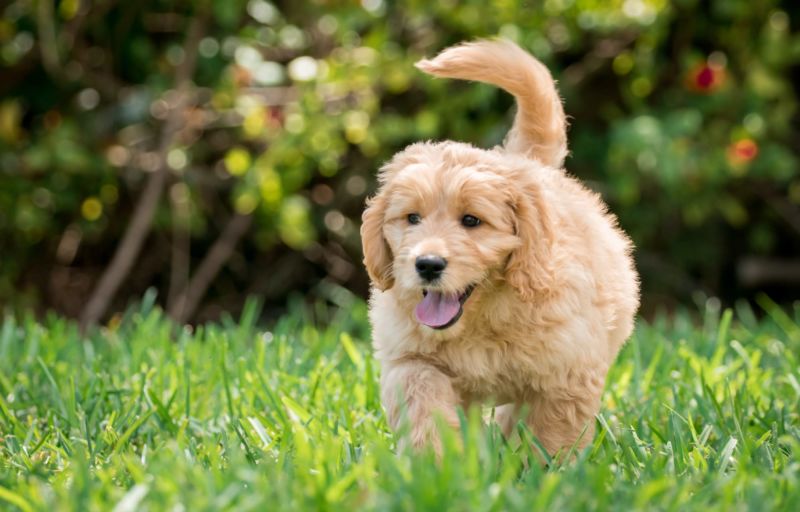
An F1 is the direct result of breeding a golden retriever with a poodle. Due to being first-generation hybrids, they have the health benefits that come hand-in-hand with a phenomenon known as “hybrid vigor.” Scientifically known as heterosis, it refers to the improved function of biological functions due to genetic diversity. The mixture of genes tends to lead to a decrease in the health risks that may be associated with purebred specimens.
-
Shedding – The majority are light-shedding to heavy-shedding.
-
Allergy Potential – This iteration is sometimes fine for families with very mild allergies but not recommended for those with moderate to severe allergies.
-
Coat – Their coat can naturally grow from 3 to 5 inches and requires combing as well as weekly grooming. You can opt to get the fur cut back every couple of months to make your pooch lower-maintenance in the upkeep department. They can have straight, curly or wavy coats.
-
Grooming – Moderate to high requirements.
F1b – First Generation Backcross
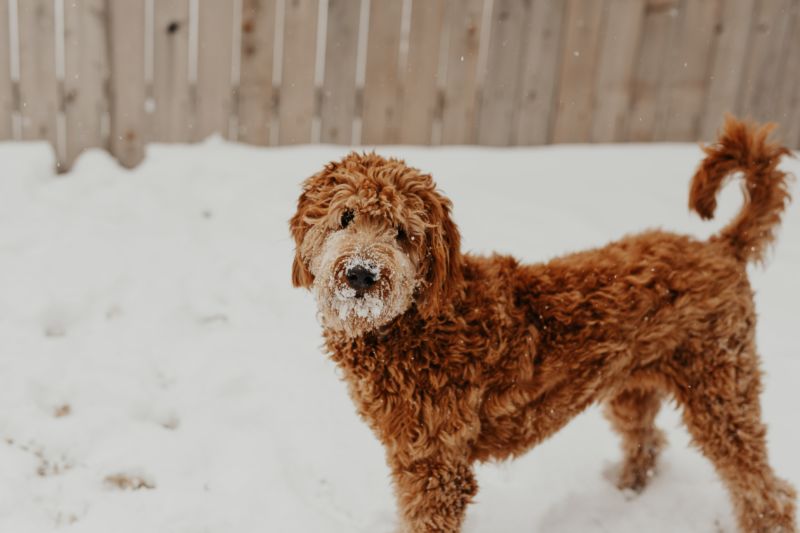
Backcrossing is breeding a hybrid back to one of the breeds it originates from. The “b” in F1b Goldendoodle simply means bred back to a purebred parent. It can be from a purebred Poodle or a purebred Golden retriever. Genetically, this means they’re still first-generation. However, the traits of either the retriever or the poodle can be intensified. Breeders tend to cross a doodle back with a poodle to increase the chances of a lower shedding litter. Hybrid vigor is still present, but since multigenerational litters have a greater chance of inheriting diseases from the same breed line, genetic health testing becomes more important to rule out disease carriers.
-
Shedding – 50% of F1b puppies are non-shedding (inheriting non-shedding Poodle traits from both parents), but 50% of F1b puppies should inherit shedding traits from the F1 parent, which means shedding levels would reflect that of an F1 (low to heavy shedding).
-
Allergy Potential – 50% chance of being hypoallergenic. 50% chance of being low to heavy shedders. (If the breeder coat tests the puppies, sometimes this factor can be known a few weeks after birth)
-
Coat – The appearance of this generation’s fur depends on the traits inherited from its F1 parent. It may range anywhere from 3-5 inches or longer and can be straight, wavy, or curly. If you’re worried about the frequency of brushing they require, you can opt to get their fur clipped back to save time on grooming and keep your dog comfortable, especially in winter.
-
Grooming – Moderate to high requirements.
F2 – Second Generation
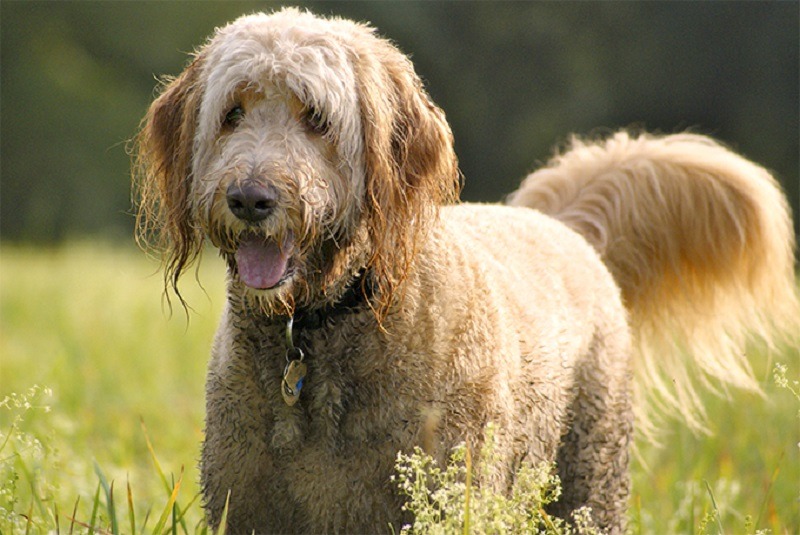
These guys are the result of breeding two F1 Goldendoodles together. This combination is generally not recommended by reputable breeders because there is a 75% chance of shedding puppies. Because both parents carry both Poodle and Retriever genes, there is a 25% chance that the shedding Retriever genes will unite in puppies, causing them to shed as much as a purebred Retriever (even more than both parents) Due to the way the genetics work, you can end up with either full poodles or full golden retrievers when crossing two doodles.
-
Shedding – 25% should be non-shedding, 50% should be low to heavy shedding, 25% should be fully shedding, just like a purebred Retriever.
-
Allergy Potential – We wouldn’t recommend these little guys to families with allergies due to the high chance of shedding unless coat testing has been performed and the genetic makeup of your specific puppy was known by the breeder.
-
Coat – F2 coats can be straight, wavy, or curly. Please know that the coat texture of young puppies is not a reliable indicator of future shedding level, as the curl gene is distinct from the shedding gene.
-
Grooming – This varies significantly according to the genetic mix the individual pup inherits.
F2b – Second Generation Backcross
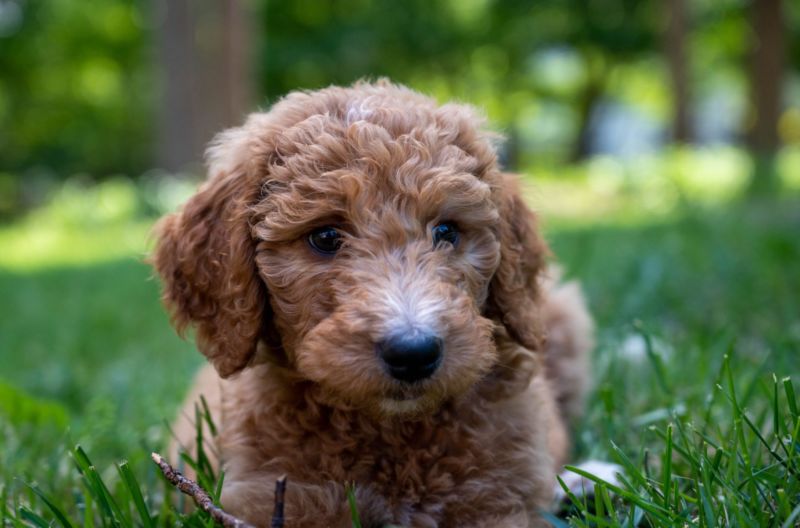
Crossing an F1 doodle with an F1b creates an F2b. As a first-generation doodle, the F1 parent carries a predictable mix of coat traits (both shedding and non-shedding genes), however, the F1b is a mystery. Unless genetic testing is performed on the F1b parent, the litter could result in a litter similar to an F1b litter or F2 litter (see above). Genetic screening for health diseases also becomes more important whenever two parents with the same breed ancestry are mixed.
-
Shedding – The F2b puppy can be anywhere from non-shedding (25-50%), low to heavy shedding (50% odds), or shed as much as a full-retriever (0-25%). It depends on what coat genes the F1b parent carries.
-
Allergy Potential – Working with a breeder who coat tests parents or puppies would be the safest way for a family with allergies to adopt an F2b puppy. Otherwise, the odds of bringing home a hypoallergenic pet are not in your favor.
-
Coat – Coats may be straight, wavy, or curly.
-
Grooming – Moderate to high grooming requirements.
F3 and Multigenerational
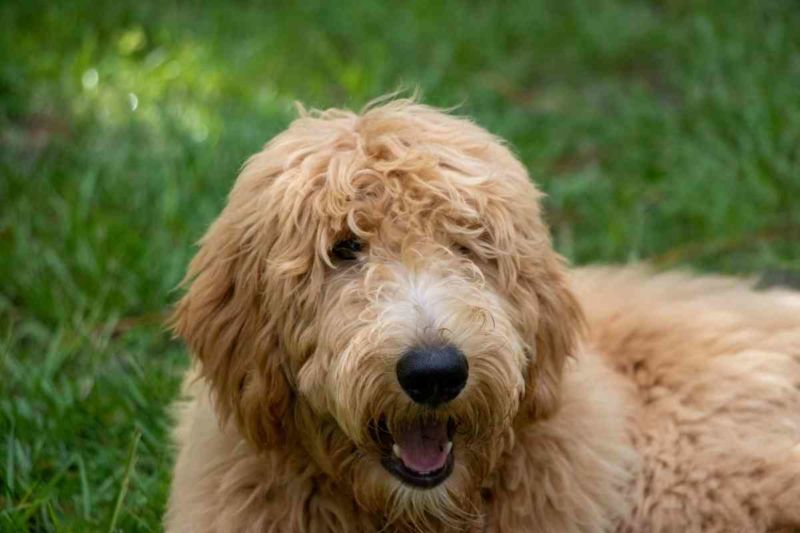
F3s are produced by breeding an F1B to an F2B, F1B to an F1B, two F3s, two F2Bs, or an F2 to an F2. When it gets to this stage, breeders often refer to them as multi-generational. At this stage, traits from either breed line can be emphasized either positively or negatively. At this stage, genetic testing and careful breeding make it possible to weed out disliked traits, like shedding, for a 100% full litter of non-shedding pups.
-
Shedding – If the breeder coat tests, it’s possible to intentionally breed two parents with zero shedding potential for a full litter of non-shedding puppies. If the breeder does not know the genetic makeup of the parents, some guesswork is still at play, and puppies of any shedding level can be created.
-
Allergy Potential – Working with a breeder who is familiar with genetic coat testing is the safest way for a family with allergies to adopt a Multigenerational puppy.
-
Coat – Coats may be straight, wavy, or curly. Although it is rarer to produce non-shedding puppies with straight coats, it is still possible. Usually, multigenerational coats are wavy or curly.
-
Grooming – Moderate to high grooming requirements.
What is the Best Goldendoodle Generations?
Generally, the Goldendoodle are healthy dogs. The most important factor is if you are an allergy sufferer. The best generation that are hypoallergenic and non-shedding are F1B, F2B, and F1BB. If shedding and allergies are not a factor to you, you can never go wrong with F1 or you can choose the generation depending on the coat you want for your Goldendoodle.
Get Your Goldendoodle Puppy Today!
Pride & Prejudoodles can help you find the pup of your dreams. If you’ve chosen which of the Goldendoodle generations suit you and your family’s needs the best, or still have questions, contact us today.
